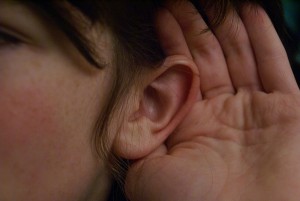
What does this mean then for those of us in leadership/coaching roles? First, I think it speaks to the need to be fully aware of our own communication style; not only how we use certain words but how we “say” them – the tone we use. Additionally, we need to be aware of what our body is saying. Do we have an aggressive stance or a relaxed one? What effect does our “language” have on others? Secondly, we need to be fully aware of the others’ words, tone and body position. Are we listening to just the words or are we totally present in the conversation so that we can take in all the signals being sent? Plus, we have to do both these things at the same time!
More importantly though, for someone in a coaching role, is the need to be fully cognizant of what the client is saying. Recognizing the importance of how the client is saying something—what is the message and the actual intent behind the words— this is what coaches require to fully help the client reach his or her goal. Flaherty stated that “the coach has to be able to observe the way the client observes and be able to articulate this so that it can be observed by the client” (p.26). The only way to get to that point is by asking open-ended and clarifying questions until the coach gets an affirmation from the client that he (the coach) “gets it”.
